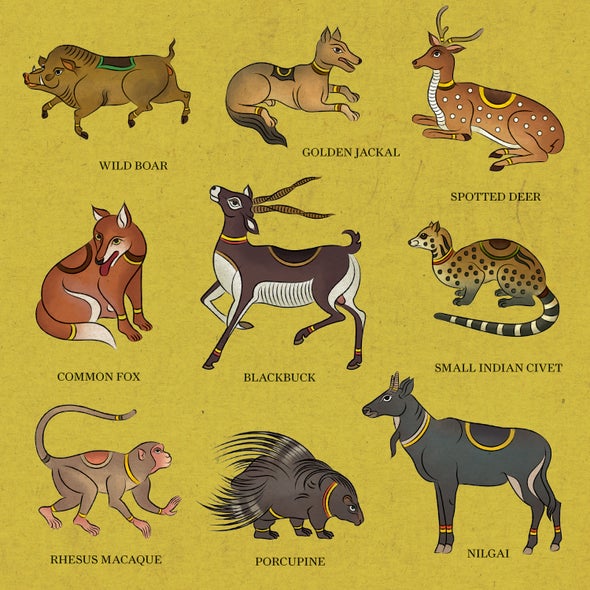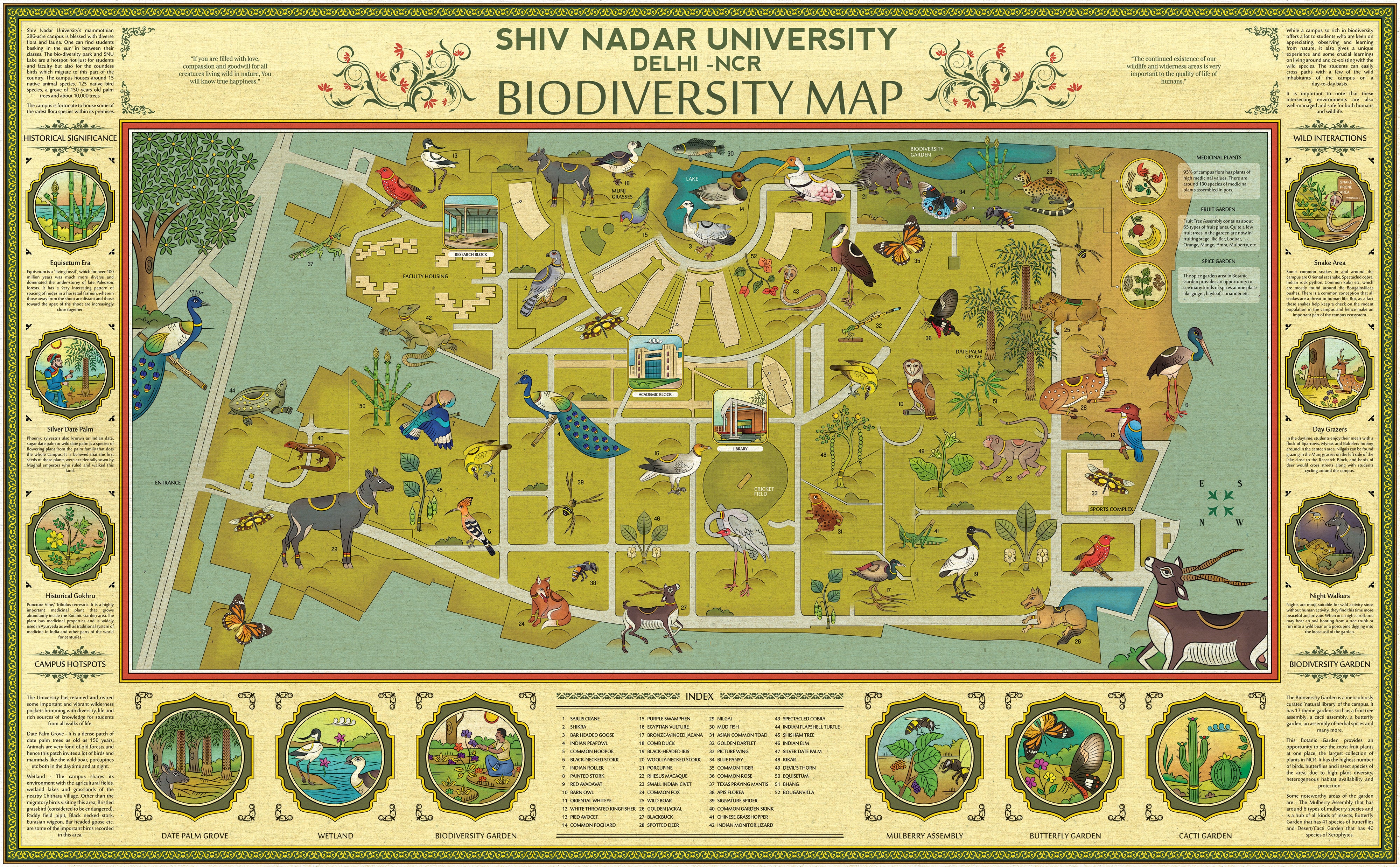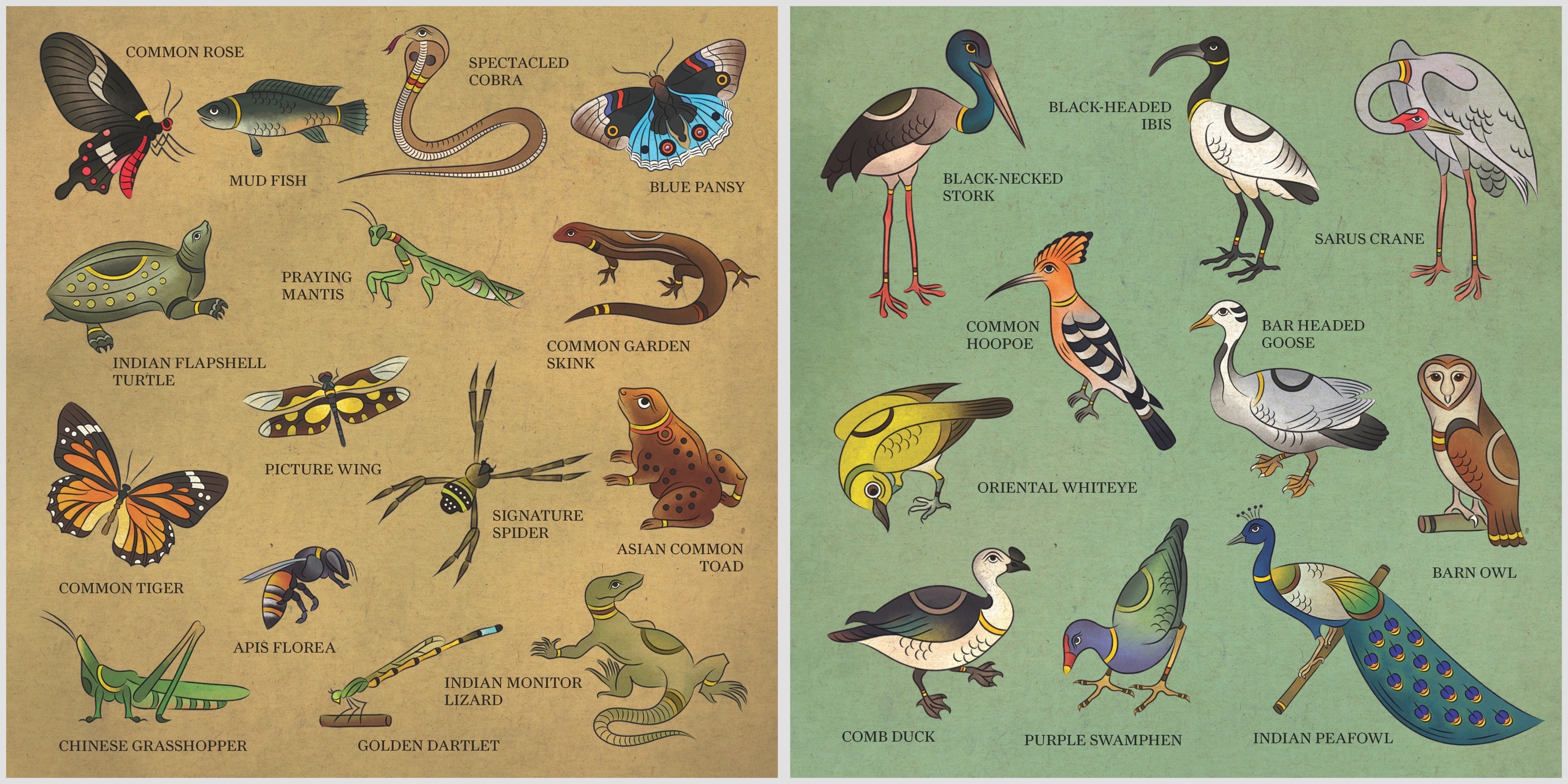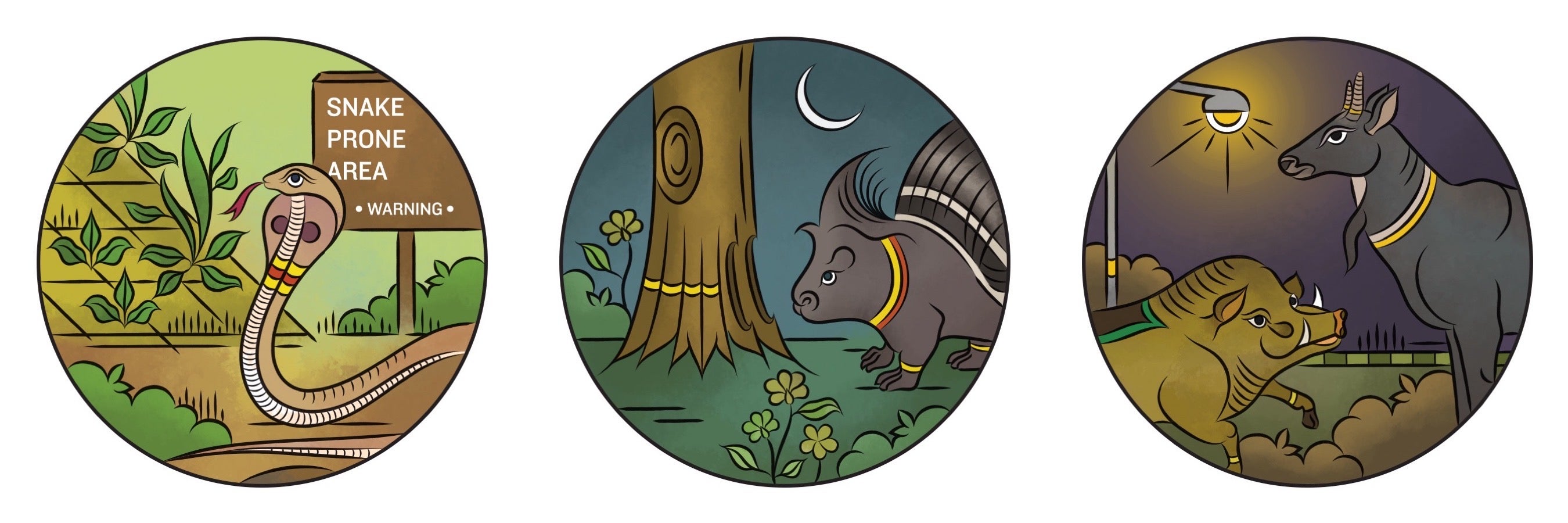To demonstrate our university’s biodiversity, we created maps using Indian folk art, and they have been a resounding success
Thank you for reading this post, don't forget to subscribe!
Yet when I spoke with students, I found that they didn’t know about the tremendous biodiversity around them or the efforts the university was taking to protect it. For years, there was virtually no signage on campus other than those that read, “No throwing plastic in the lake” and “Beware of snakes.” Both messages seemed far removed from celebrating the flora and fauna on campus. As a science communicator, I wanted to do something about this.
We could have taken photographs of the different species present and installed signboards all over campus—universities such as mine have many naturalists on staff teaching and doing research who could have helped. But I had a different idea.

Folk art can be a powerful visual and nonverbal tool for communicating complex scientific ideas. I thought, why not employ this idea as a way to display the university’s biodiversity? I hoped it would both generate curiosity and perhaps pride. I reached out to a folk artist, Sudarshan Shaw, with the aim of creating a biodiversity map of the university’s campus. He is well known for illustrating biodiversity maps of the state of Andhra Pradesh that feature more than 55 species of flora and fauna in a traditional style called kalamkari. Derived from the Hindi word kalam, which means pen, this form of folk art involves an intricate type of painting onto cloth.
Sudarshan had also created his first biodiversity map, which represented the state of Odisha, in the pattachitra style—a form of art said to be from the 12th century and used for depicting Hindu mythology on a patta, or canvas.
I (Shaw) was thrilled to join the project. When Bahar came up with her vision of creating a biodiversity map for an educational institution, a university campus, it was one-of-a-kind, farsighted and, most importantly, truly local. I instantly knew that we were aligned to strike a meaningful collaboration.
I believe that true conservation benefits most from using local voices, language and history, and practices, among other things. The majority of humans living in “busyscapes” do not notice nonhuman species. Bringing young minds to realize that nature is not far away but that it is found every day, everywhere, all around us, and that we are an integral part of it—and kindling their rapidly withering curiosity, wonder and consciousness—would go a long way in promoting conservation.

Together, we decided to create a biodiversity map of Shiv Nadar University in the Mughal style of art. This style of painting was generally confined to miniatures and was mainly developed where Mughal kings ruled South Asia from the 1500s to the 1700s. I (Shaw) chose the Mughal style because the paintings I know demonstrate a harmonious imagery for the contrast that is wilderness well settled in and around architectural marvels. I made this connection myself when I visited the campus and saw the wild patches that have been allowed to flourish amid the architecturally articulate buildings and its meticulously curated botanical garden. And Mughal miniature paintings seem to be one of the very few folk art forms that stylize drawings closest to how flora and fauna forms actually appear, making them more scientifically accurate, along with giving them a uniquely tranquil character and visual appeal. I took advantage of the quiet during the height of COVID restrictions to paint 50 or so species of birds, mammals and flora.
To make the map, we combined three disciplines—ecology (from the campus and its scientists), communications and art—to come up with a final product set up across the campus at different vantage points (such as the library, the hostel ) so that students could stop and learn about the natural world around them.
We believe this is the first instance of creating a biodiversity map for a built environment. The map has now taken on many forms. We sourced cloth from weavers in Banaras, India, whose textile designs date back hundreds of years, and printed the map on it to make a stole. When guests visit the campus, we offer them a stole as a sign of respect. It has become a prized possession for every member of the Shiv Nadar community.

Since the installation of the biodiversity maps at significant spots across the campus, students have become more aware of the biodiversity that surrounds them. Indeed, the maps have proved to be an excellent recruiting tool: a student told me (Dutt) in class that when she saw the maps on a tour before enrolling, she “realized this is the university [she] wanted to study in and nowhere else.”
Scientific information can be weighty. It may not reach all audiences, especially if people haven’t had access to formal education. We have seen that using simple communication tools such as maps can generate interest in nature. At Shiv Nadar University, this project showed us that a nontypical visual tool could be powerful in communicating complex terms to an urban, well-educated target group while also creating a positive attitude toward nature around them. We invite other universities to explore how folkloric art can be a teaching tool in a time of climate change and species loss. We believe such projects will have a lasting effect on viewers while communicating concepts related to science of biodiversity in an offbeat, memorable and reliable way.
This is an opinion and analysis article, and the views expressed by the author or authors are not necessarily those of Scientific American.
ABOUT THE AUTHOR(S)
Bahar Dutt is an award-winning environmental journalist and associate professor at Shiv Nadar University in India.
Sudarshan Shaw is a celebrated folk artist in India who uses his artwork to spread the message of conservation.

